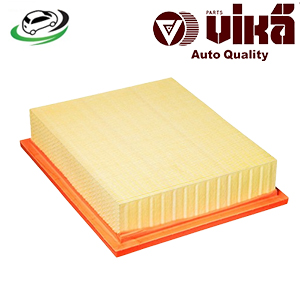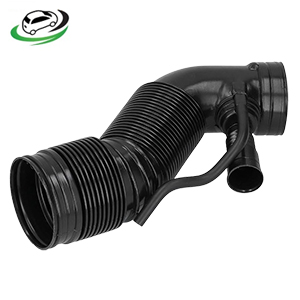-13%
Get Engine Oil Pressure Switch Audi A3/Audi A3 Quattro/Audi A4/Audi A4 Quattro/Audi A6/Audi TT 06D919081B in Kenya
The engine oil pressure switch is a crucial component in a vehicle’s engine management system. It monitors the oil pressure within the engine and provides essential feedback to the driver and onboard computer systems. This guide explores the function, design, common issues, and maintenance of the engine oil pressure switch.
1. Purpose and Function of the Engine Oil Pressure Switch
The engine oil pressure switch is designed to monitor the oil pressure within the engine and ensure that it remains within safe operating limits. Its primary functions include:
1.1. Monitoring Oil Pressure
- Pressure Sensing: The oil pressure switch is equipped with a pressure-sensing mechanism that detects the oil pressure within the engine. It is typically located in the engine block or near the oil filter, where it can accurately measure the pressure of the oil circulating through the engine.
- Signal Transmission: The switch sends a signal to the engine control unit (ECU) or dashboard oil pressure gauge, providing real-time information about the oil pressure. This allows the driver and onboard systems to monitor and respond to changes in oil pressure.
1.2. Warning Light Activation
- Low Oil Pressure Warning: If the oil pressure falls below a predetermined level, the oil pressure switch activates a warning light on the vehicle’s dashboard. This light alerts the driver to potential issues with the oil pressure and prompts them to take corrective action.
- Engine Protection: The warning light helps to prevent engine damage by alerting the driver to low oil pressure, which could indicate insufficient lubrication or other serious engine issues. Immediate action, such as checking the oil level or seeking professional help, can prevent costly damage and ensure engine longevity.
1.3. Oil Pressure Regulation
- Oil Pump Control: In some vehicles, the oil pressure switch may be integrated with the oil pump control system. It helps regulate the oil pump’s operation based on the detected oil pressure, ensuring that the engine receives adequate lubrication and cooling.
2. Design and Structure of the Engine Oil Pressure Switch
The engine oil pressure switch is designed to be a reliable and durable component, capable of withstanding the harsh operating conditions within the engine. Its design includes several key components:
2.1. Key Components
- Pressure Sensor: The core component of the oil pressure switch is the pressure sensor, which detects the oil pressure and generates an electrical signal. The sensor typically consists of a diaphragm or piston that moves in response to oil pressure changes.
- Electrical Contacts: The switch includes electrical contacts that open or close based on the oil pressure. When the pressure falls below the specified threshold, the contacts close, completing the circuit and triggering the warning light or signal.
- Housing: The housing of the oil pressure switch is usually made from metal or high-strength plastic, designed to withstand the engine’s operating conditions. It protects the internal components from dirt, debris, and oil exposure.
- Threaded Mounting: The switch is typically threaded to allow for secure mounting in the engine block or near the oil filter. Proper mounting ensures accurate pressure measurements and reliable operation.
2.2. Types of Oil Pressure Switches
- Mechanical Switches: Traditional oil pressure switches use mechanical components, such as a diaphragm or piston, to detect changes in oil pressure. These switches are simple and reliable but may have limitations in terms of precision and durability.
- Electronic Switches: Modern vehicles may use electronic oil pressure switches that incorporate advanced sensors and digital circuitry. These switches provide more precise measurements and can be integrated with other engine management systems for enhanced performance and control.
2.3. Mounting and Installation
- Mounting Location: The oil pressure switch is typically mounted in the engine block or near the oil filter. This location ensures that it has direct access to the engine’s oil supply and can accurately measure the oil pressure.
- Installation: Installing the oil pressure switch involves threading it into the mounting location and securing it with the appropriate hardware. Proper installation is crucial for accurate pressure measurements and reliable operation.
3. Common Issues with Engine Oil Pressure Switches
The oil pressure switch can experience various issues over time, affecting its performance and reliability. Common problems include:
3.1. Wear and Damage
- Worn Contacts: Over time, the electrical contacts within the oil pressure switch can wear out or become corroded. This can lead to false readings or intermittent operation of the warning light.
- Physical Damage: The switch can become physically damaged due to engine vibrations, impacts, or exposure to harsh conditions. This damage can affect the switch’s ability to accurately measure oil pressure.
3.2. Warning Light Issues
- False Warnings: A malfunctioning oil pressure switch can trigger the warning light even when the oil pressure is正常. This can lead to unnecessary concern and confusion for the driver.
- No Warning: Conversely, a failed switch may not activate the warning light even when the oil pressure is dangerously low. This can result in delayed detection of potential engine issues and increased risk of damage.
3.3. Oil Pressure Measurement Problems
- Inaccurate Readings: A faulty oil pressure switch can provide inaccurate readings, leading to incorrect information being displayed on the dashboard. This can affect the driver’s ability to monitor the engine’s condition and respond to potential issues.
4. Maintenance and Replacement
Regular maintenance and timely replacement of the oil pressure switch are essential for ensuring accurate oil pressure monitoring and preventing engine damage.
4.1. Inspection
- Visual Check: Regularly inspect the oil pressure switch for signs of physical damage, leaks, or wear. Check the wiring and connectors for any signs of corrosion or loose connections.
- Warning Light Function: Test the oil pressure warning light by turning on the ignition and checking if the light illuminates. Ensure that the light turns off once the engine starts and oil pressure is正常.
4.2. Replacement Procedure
- Removing the Old Switch: To replace a faulty oil pressure switch, first, ensure the engine is cool and the vehicle is safely supported. Disconnect the battery to prevent electrical issues. Remove the old switch by unscrewing it from its mounting location and disconnecting any attached wiring.
- Installing the New Switch: Install the new oil pressure switch by threading it into the mounting location and securing it with the appropriate hardware. Reconnect the wiring and ensure that all connections are secure.
- Testing: After installing the new switch, start the engine and check the oil pressure warning light. Ensure that it functions correctly and that the oil pressure readings are正常.
4.3. Professional Service
- Consult a Mechanic: If you encounter difficulties with the oil pressure switch or if the issue persists after replacement, it is advisable to consult a professional mechanic. They can perform a thorough diagnosis, ensure proper installation, and address any underlying issues with the engine’s oil pressure system.
5. The Role of the Engine Oil Pressure Switch in Vehicle Safety
The engine oil pressure switch is crucial for maintaining engine health and safety by:
5.1. Preventing Engine Damage
- Early Warning: By providing timely warnings of low oil pressure, the oil pressure switch helps to prevent engine damage caused by insufficient lubrication. This allows the driver to take corrective action before significant damage occurs.
5.2. Ensuring Accurate Monitoring
- Reliable Readings: A properly functioning oil pressure switch ensures accurate monitoring of the engine’s oil pressure. This helps to maintain optimal engine performance and prevent potential issues related to lubrication and cooling.
5.3. Enhancing Safety
- Driver Awareness: The oil pressure warning light alerts the driver to potential problems with the oil pressure, contributing to overall vehicle safety. This early warning allows the driver to address issues promptly and avoid potential accidents or breakdowns.
6. Advances in Engine Oil Pressure Switch Technology
Modern vehicles incorporate advanced technologies to enhance the performance and reliability of the engine oil pressure switch:
6.1. Advanced Sensors
- Precision Measurement: Modern oil pressure switches use advanced sensors and digital circuitry to provide more precise measurements of oil pressure. This improves the accuracy of the readings and enhances overall engine management.
6.2. Integrated Systems
- Enhanced Integration: In many modern vehicles, the oil pressure switch is integrated with other engine management systems, such as the engine control unit (ECU) and diagnostic systems. This integration allows for more sophisticated monitoring and control of engine performance.
6.3. Improved Durability
- Advanced Materials: Newer oil pressure switches use advanced materials and coatings to improve durability and resistance to wear and environmental factors. This ensures longer service life and reliable performance under harsh operating conditions.
Follow us on Facebook for more parts.



